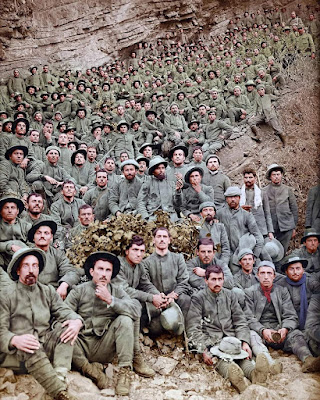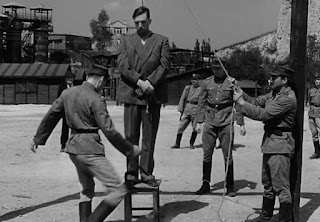Italian prisoners captured during the Second Battle of the Isonzo, 1915.
Today 108 years ago, on July 18, 1915, the Italians launched the Second Battle of the Isonzo against the Austro-Hungarians on the Italian Front.
On June 23, 1915, the Italians opened up the Isonzo Front by launching the First Battle of the Isonzo, resulting in minimal Italian gains at the price of 15,000 Italian casualties and 10,000 Austro-Hungarian casualties. Though the Italians believed the Austro-Hungarian lines were near collapse and immediately began planning for yet another offensive on the Isonzo.
For this battle the Italians brought up some 290,000 troops and many artillery guns, which they believed was the factor which caused the defeat in the first battle.
The Austro-Hungarians had also received reinforcements from the Eastern Front, but were still outnumbered 2:1. Since the first battle they had improved their defensive positions in the rocky terrain near the Isonzo, expecting further Italian offensives.
The offensive would focus on the southern part of the Isonzo Front on the Carso Plateau south of Gorizia. The Italian Third Army would attack at Monte San Michele and hopefully break through, and the Italian Second Army would attack at Gorizia and Plava to pin down Austro-Hungarian troops.
Just 11 days after the end of the First Battle of the Isonzo, at 4 AM on July 18, 1915, after a terrific 7-hour long artillery bombardment of 840 guns along a 20-mile stretch of Austro-Hungarian frontline trenches, 250,000 Italian soldiers charged the Carso Plateau, defended by 78,000 Austro-Hungarian soldiers.
The artillery succeeded in many places and the Italians managed to capture the Monte San Michele. The Austro-Hungarians counter-attacked and fierce hand-to-hand combat broke out over the following days over control of the mountains.
The Italians attacking at Gorizia met stiff resistance and captured little ground for huge casualties, as they charged unorganized against Austro-Hungarian machine-guns.
⬇️CONTINUED BELOW⬇️











Comments
Post a Comment